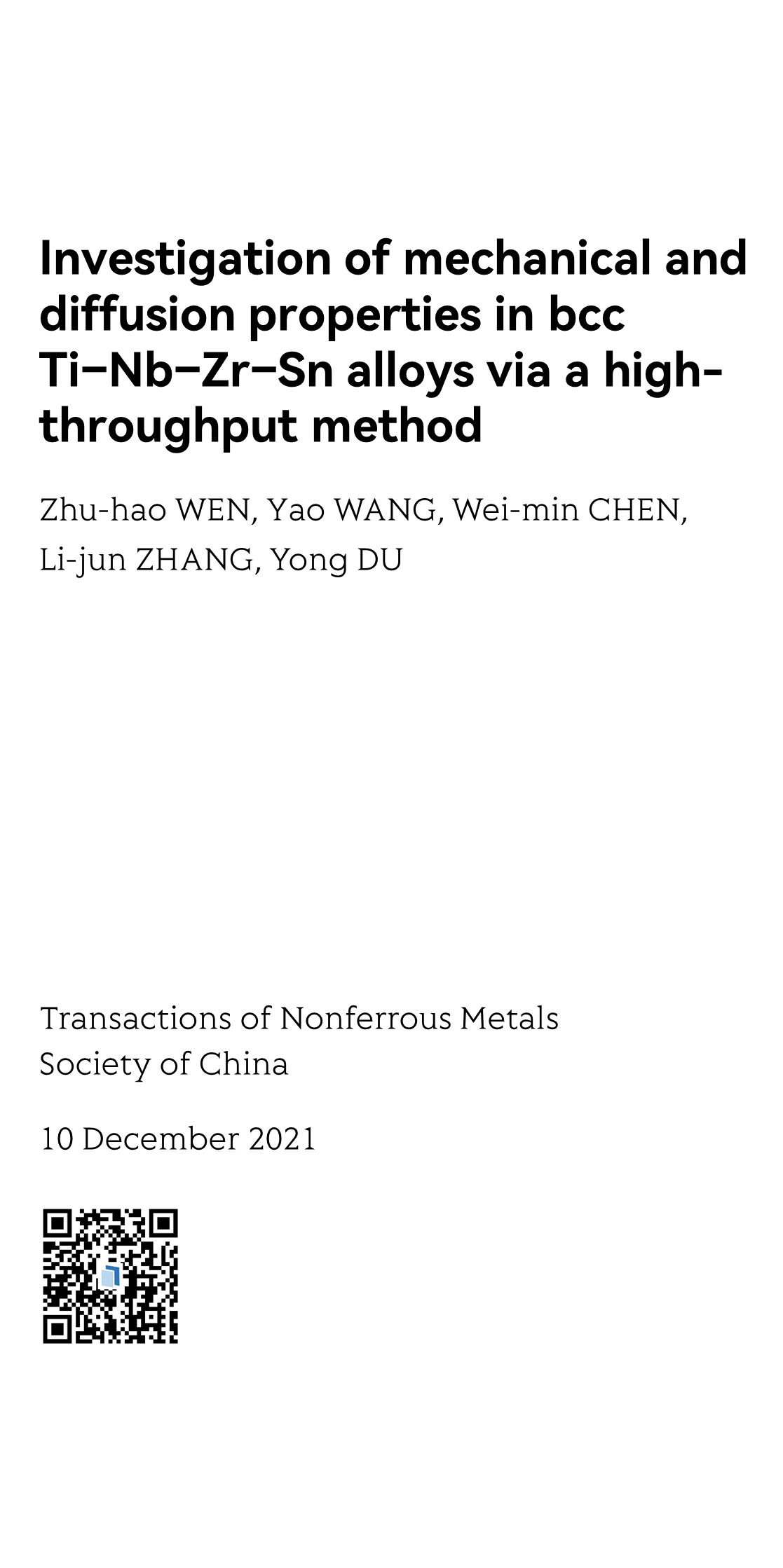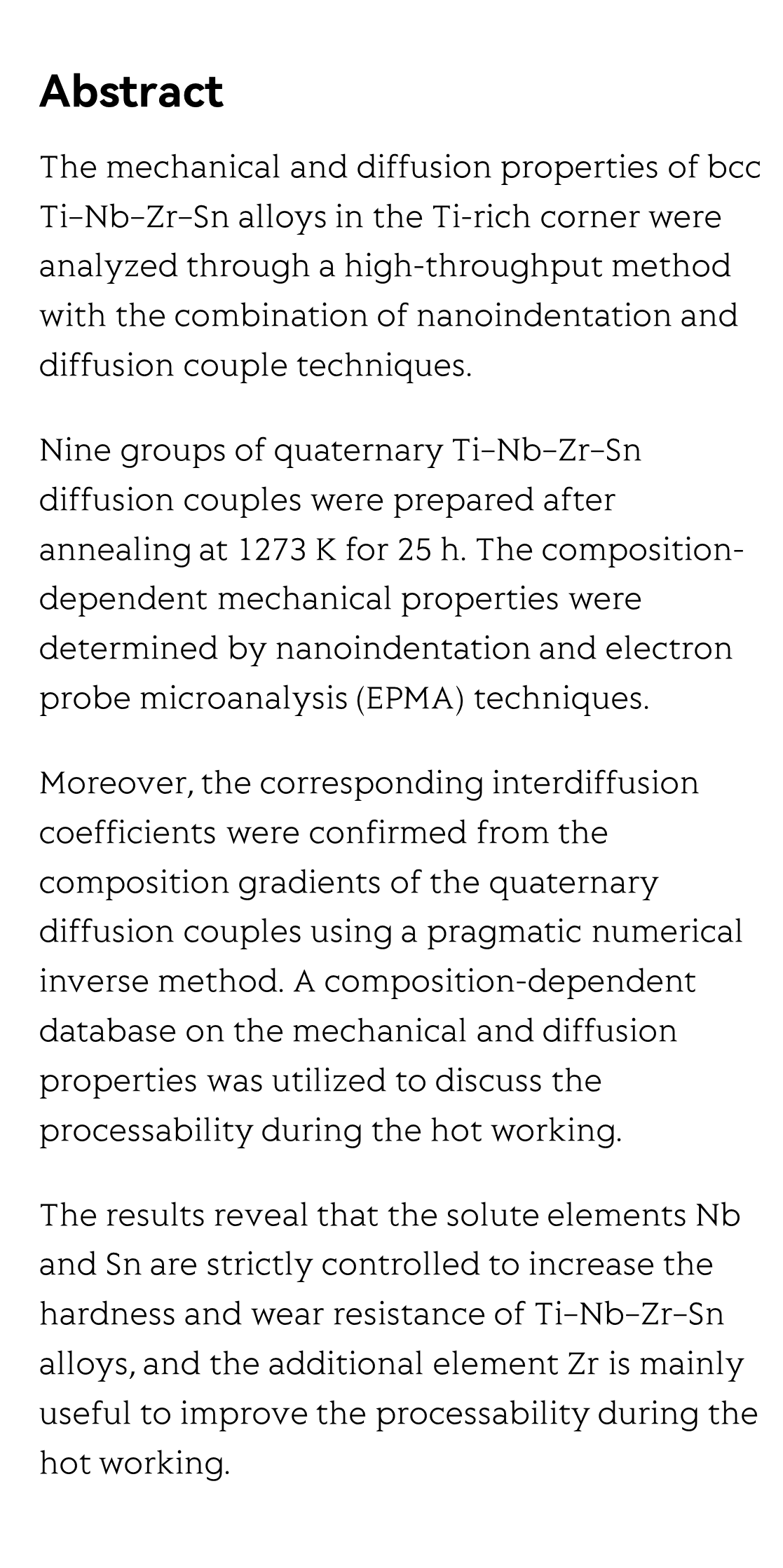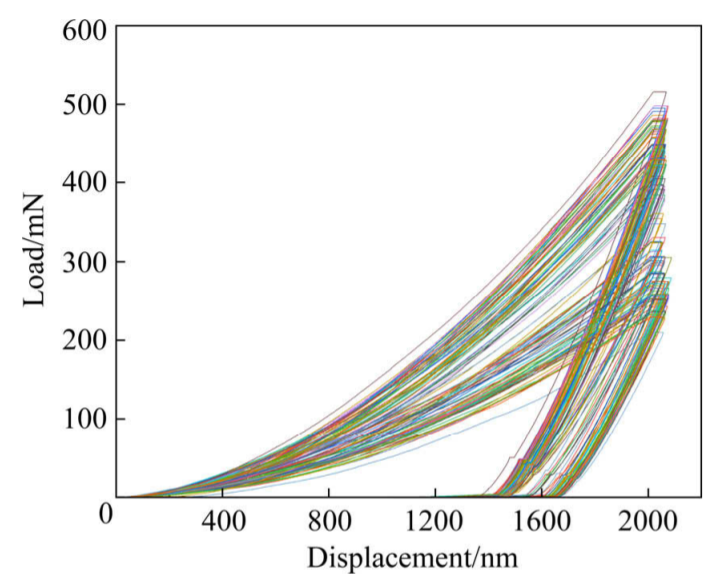(Peer-Reviewed) Investigation of mechanical and diffusion properties in bcc Ti−Nb−Zr−Sn alloys via a high-throughput method
Zhu-hao WEN 闻祝浩 ¹, Yao WANG 王瑶 ², Wei-min CHEN 陈伟民 ¹, Li-jun ZHANG 张利军 ³, Yong DU 杜勇 ³
¹ Institute of Advanced Wear & Corrosion Resistant and Functional Materials, Jinan University, Guangzhou 510632, China
中国 广州 暨南大学先进耐磨蚀及功能材料研究院
² Centre of Excellence for Advanced Materials, Dongguan 523808, China
中国 东莞 东莞材料基因高等理工研究院
³ State Key Laboratory of Powder Metallurgy, Central South University, Changsha 410083, China
中国 长沙 中南大学粉末冶金国家重点实验室
Abstract
The mechanical and diffusion properties of bcc Ti−Nb−Zr−Sn alloys in the Ti-rich corner were analyzed through a high-throughput method with the combination of nanoindentation and diffusion couple techniques.
Nine groups of quaternary Ti−Nb−Zr−Sn diffusion couples were prepared after annealing at 1273 K for 25 h. The composition-dependent mechanical properties were determined by nanoindentation and electron probe microanalysis (EPMA) techniques.
Moreover, the corresponding interdiffusion coefficients were confirmed from the composition gradients of the quaternary diffusion couples using a pragmatic numerical inverse method. A composition-dependent database on the mechanical and diffusion properties was utilized to discuss the processability during the hot working.
The results reveal that the solute elements Nb and Sn are strictly controlled to increase the hardness and wear resistance of Ti−Nb−Zr−Sn alloys, and the additional element Zr is mainly useful to improve the processability during the hot working.
Flicker minimization in power-saving displays enabled by measurement of difference in flexoelectric coefficients and displacement-current in positive dielectric anisotropy liquid crystals
Junho Jung, HaYoung Jung, GyuRi Choi, HanByeol Park, Sun-Mi Park, Ki-Sun Kwon, Heui-Seok Jin, Dong-Jin Lee, Hoon Jeong, JeongKi Park, Byeong Koo Kim, Seung Hee Lee, MinSu Kim
Opto-Electronic Advances
2025-09-25
Dual-frequency angular-multiplexed fringe projection profilometry with deep learning: breaking hardware limits for ultra-high-speed 3D imaging
Wenwu Chen, Yifan Liu, Shijie Feng, Wei Yin, Jiaming Qian, Yixuan Li, Hang Zhang, Maciej Trusiak, Malgorzata Kujawinska, Qian Chen, Chao Zuo
Opto-Electronic Advances
2025-09-25





